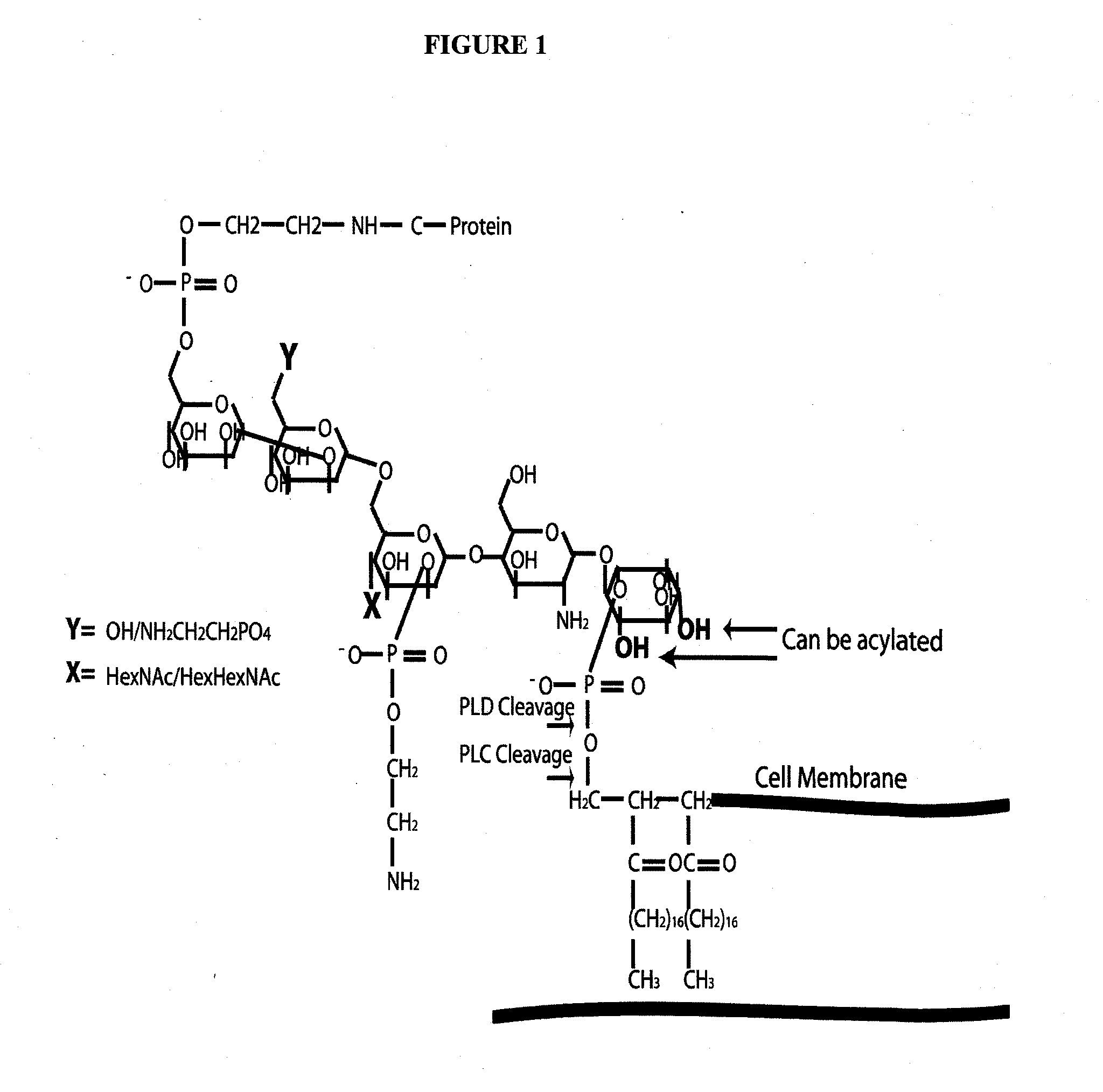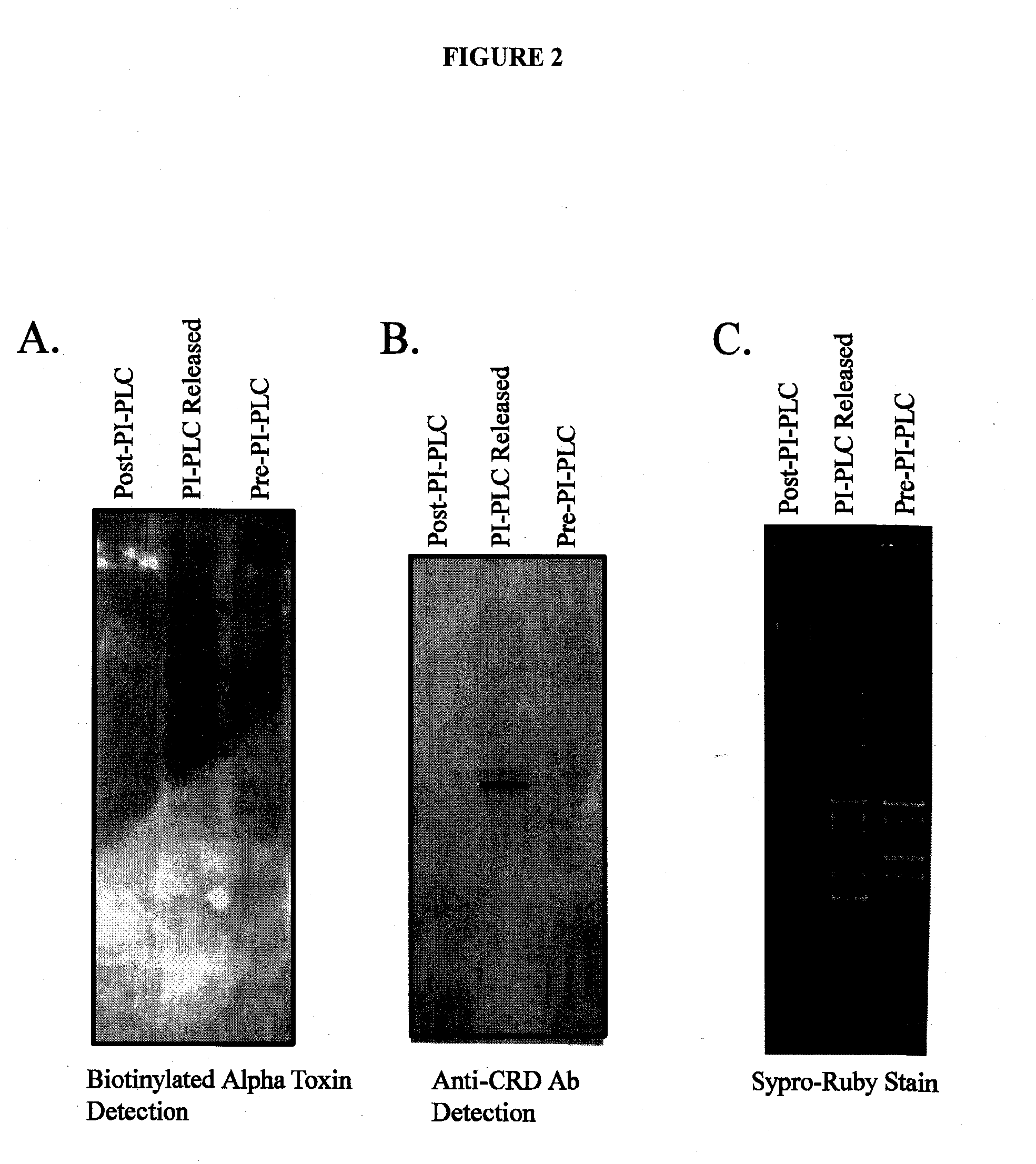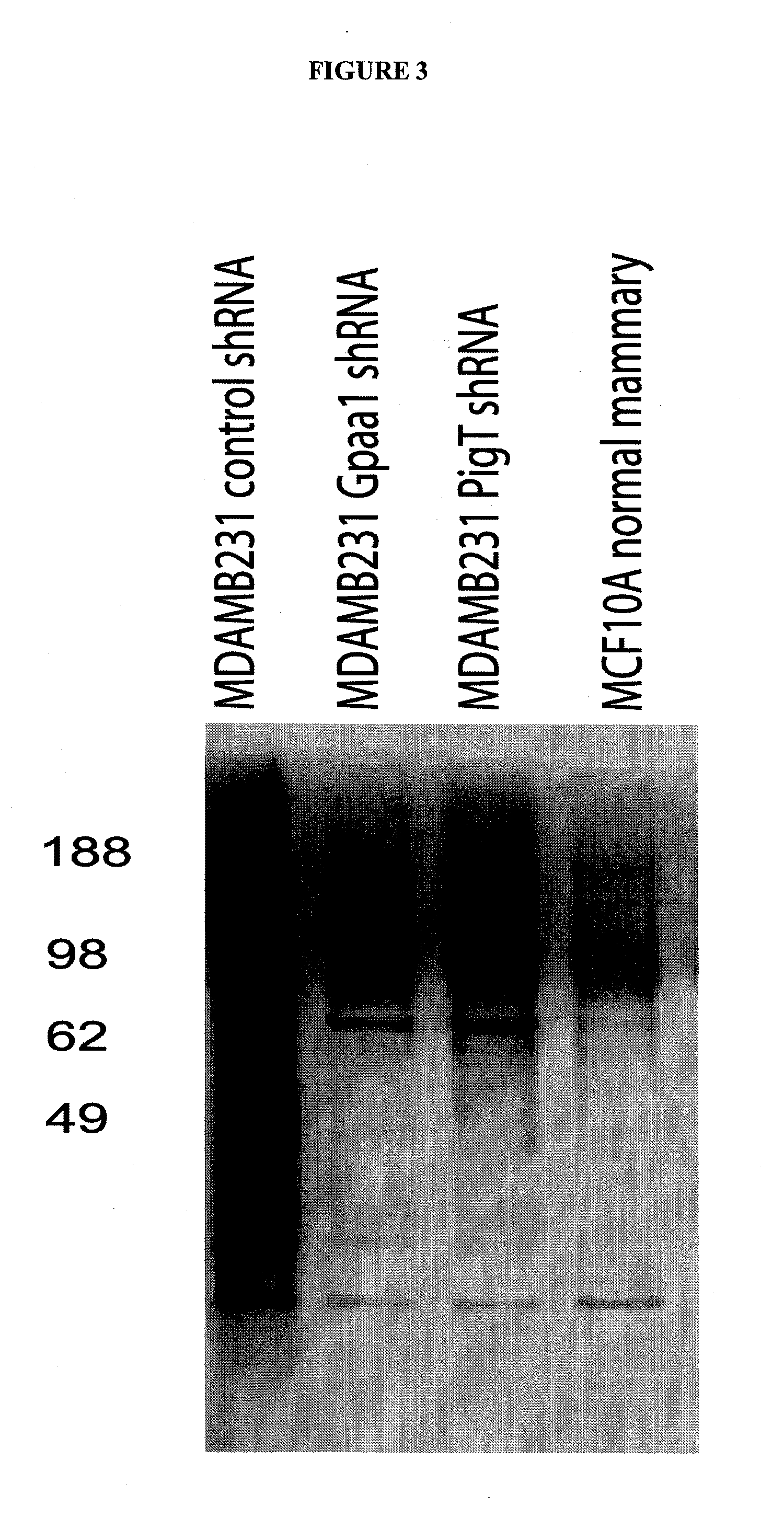Alpha toxin detection of gpi anchored proteins
a technology of gpi and toxin, which is applied in the field of alpha toxin detection can solve the problems of difficult prediction of gpi anchored protein annotation in mammalian protein databases, and often hampered experimental isolation and identification of gpi anchored proteins from mammalian cells
- Summary
- Abstract
- Description
- Claims
- Application Information
AI Technical Summary
Benefits of technology
Problems solved by technology
Method used
Image
Examples
example 1
Method
[0091]Alpha toxin was expressed and purified from the PET22 vector using E. Coli BL21 cells. The purified alpha toxin was labeled with biotin using the Pierce EZ-link sulfo-NHS-LC Biotin labeling reagent according to the manufacturers instructions. Membrane proteins were extracted from the invasive breast cancer cell line MDAMB231 using a triton X-114 phase separation protocol. Fractions of proteins from the extraction were sampled as follows: pre-PI-PLC fraction contained all membrane proteins solubilized in SDS-loading buffer, PI-PLC released containing the proteins that were released into the soluble phase after PI-PLC enzyme incubation, the post-PI-PLC fraction contained membrane proteins remaining that were solubilized in SDS-loading buffer. Proteins corresponding to twenty micrograms per fraction were separated by polyacrylamide gel electrophoresis on 4-12% Bis Tris gel. The gel was stained with Sypro-Ruby stain and imaged under a UV light source. Proteins on a duplicate...
example 2
[0094]The development of techniques to capture and enrich GPI-APs released from mammalian cells would greatly enhance the characterization of human GPI-APs. One very promising methodology is the use of carbohydrate binding proteins known as lectins. Toxins such as aerolysin from A. hydrophila and alpha toxin from C. septicum have been shown to act as GPI-specific lectins, binding to the conserved glycan core of the GPI anchor. Recent studies have shown that aerolysin requires interactions with the protein N-glycan as well as the GPI core [13]. Studies using alpha toxin from C. Septicum have demonstrated that this protein recognizes with very broad specificity the core GPI anchor structure [4]. Researchers have been utilizing these toxins to discover new CHO cell mutants with defects in GPI biosynthesis. Recently, a mutant form of the alpha toxin from C. Septicum that is non-toxic to cells was shown to have potential value as an agent to differentiate GPI-positive cells from GPI-nega...
example 3
[0098]To show that alpha toxin can be used to bind colon cancer GPI-APs, intact LS174T colon cancer cells were incubated with phospholipase-1×PBS (PIPLC) or 1 U / ml PI-PLC in 1×PBS (+PIPLC) for 1 hour at 37 C. Ten percent of the proteins released from the cells were loaded for each sample (lanes 1 and 2, see FIG. 7). The remaining 90% was incubated with alpha toxin beads (lanes 3 and 4 of FIG. 7). The captured proteins were separated on 4-12% Bis-Tris gel before being silver stained. FIG. 7 indicates that alpha toxin can specifically capture phospholipase released GPI anchored proteins. Alpha toxin Selectively captured proteins from the PIPLC treated cells. Equivalent levels of proteins were present in the reactions indicated by the 10% input.
Examples
Proteomic Identification of Glycosylphosphatidylinositol (GPI) Anchor-Dependent Membrane Proteins Elevated in Breast Carcinoma
Experimental Procedures (Second Set of References Applies)
[0099]Posttranslational addition of a glycosylphospha...
PUM
| Property | Measurement | Unit |
|---|---|---|
| Concentration | aaaaa | aaaaa |
| Content | aaaaa | aaaaa |
Abstract
Description
Claims
Application Information
 Login to View More
Login to View More - R&D
- Intellectual Property
- Life Sciences
- Materials
- Tech Scout
- Unparalleled Data Quality
- Higher Quality Content
- 60% Fewer Hallucinations
Browse by: Latest US Patents, China's latest patents, Technical Efficacy Thesaurus, Application Domain, Technology Topic, Popular Technical Reports.
© 2025 PatSnap. All rights reserved.Legal|Privacy policy|Modern Slavery Act Transparency Statement|Sitemap|About US| Contact US: help@patsnap.com



